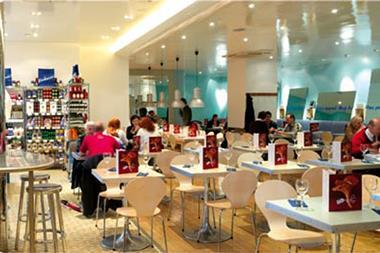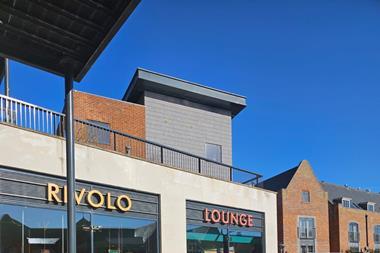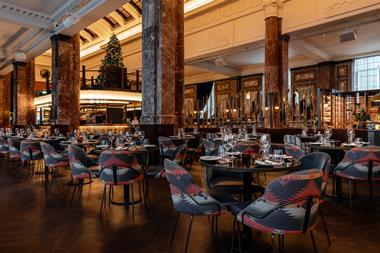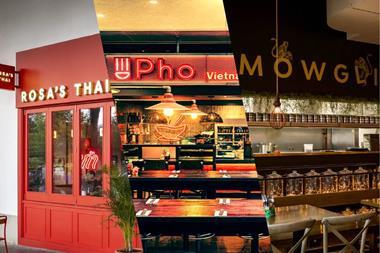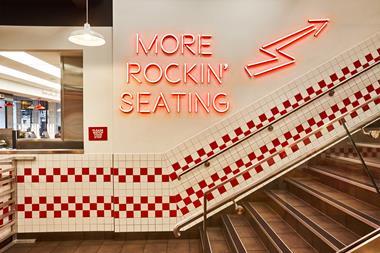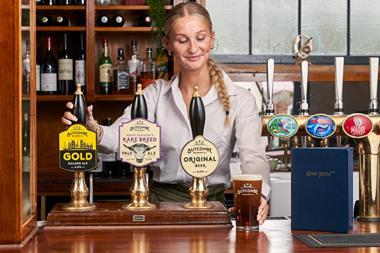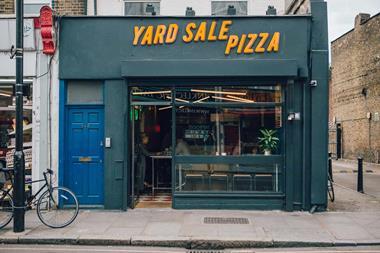After a tumultuous year across the eating and drinking-out sector, 2018 is likely to represent the establishment of a ‘new normal’ in terms of trading conditions. AlixPartners managing director Graeme Smith talks to James Wallin about the likely winners and losers of this new era
The past 12 months have been marked by a polarisation in the market, driven by increasing competition and costs. It’s easy to paint a gloomy picture of the industry but even in casual dining, which has been hit hardest, there are operators still resonating with consumers and performing strongly. I spoke to Graeme Smith, of AlixPartners about his view of the eating and drinkingout sector in 2018 and the likely activity both in terms of M&A and restructuring.
Looking back on the picture painted in 2017, he says: “The fast-growing, wellpositioned operators out there, the likes of Turtle Bay and Loungers, know their model intimately and understand the locations it works best in. You don’t need to be a new kid on the block to thrive either – as Wagamama continues to prove. “Challenges have arisen where companies that expanded early in the vintage years of plentiful growth have had to adapt to increased competition and lower sales levels. Adapting to the new normal of latent demand in a local area, while maintaining connection and relevance with the target consumer is a key challenge to operators today. “The pinch of top-line stepping down due to competition and consumer demand combined with the cost base stepping up, has led to some pretty large transformations in site profitability. It has become a test of who can best adapt their model to suit.”
Opportunities for the strong
The situation inevitably presents challenges for many brands but also opportunities for the stronger performers. Smith sees a shift in the balance of power between operators and landlords.
He explains: “Landlords who used to have their pick of the restaurants and retailers are now finding that both sides are rapidly scaling back their roll-out plans. That plays into the hands of those operators still in a position to expand – there is less competition and when they are looking for new sites that can either reduce the cost or get them a better pitch in the towns or cities they want to open in.”
Smith says there is little doubt that, over the coming years, a strong property manager is going to be vital for even the smartest of operators.
“Loungers proved you didn’t need to be in the prime locations but you absolutely need to understand the flow of people and the dynamics of any particular location. As long as you understood where your offer works and you make sure your sites fit those characteristics then you are in control. The problem comes when a business decides it needs to be in a particular city but doesn’t have sufficient local knowledge to pick the right location, or lacks local landlord relationships to understand shifts in the centre due to new developments. Often Londonbased operators need to prove the model works in regional cities – this has not always been easy and site selection plays a crucial part in this.
“It is hyper-local property management, and everyone will be on the lookout for the next growth areas. Retail parks were a big part of the growth plans of some big brands a few years ago and for a period they were very profitable, but times change and if you don’t see that direction of travel in time or you have overexposed yourself to one market, you’re in trouble. Now people are looking to transport hubs and sporting venues as the new growth areas – but it goes back to understanding what your particular customer base is looking for.
Have to have a plan
In terms of those companies that have gone through a restructuring process or are heading towards one, there are ways to come back. However, Smith stresses that following any restructure it is important there’s a plan.
“The advantage of successfully restructuring your business and property portfolio, for example, following a CVA, is you can shrink back to a profitable and stable core from which to grow again. If you then have access to additional funds, it’s about looking at those key strategic geographies that work for your brand and remembering what made you successful in the first place.
“These businesses still need to grow, even if only steadily, because it creates that buzz. You can attract and retain staff. Staff are so perceptive at understanding when money is tight or performance is poor and they won’t hang around long if there isn’t some sort of momentum. “Brands can reinvigorate themselves – TGI Fridays is a great example of that. When you look back, that was a brand that was losing its way but Karen Forrester really turned it around. What she did was put the fun back into the brand and take it back to its roots.”
Ones to watch
Smith believes that in 2018, small is beautiful, and that much of the momentum in the sector will come from fledgling, agile brands at the small and mid-sized end of the market. “Those businesses still enjoying high margins with their product – Pizza Pilgrims or more established ones like Pho – are ones to watch. Flat Iron has a great future ahead of it and anyone backed by Piper is generally a pretty good bet.
“It will also be interesting to see what happens where you have management change coming to some well-established businesses. That can really invigorate the business. Mark Jones at Carluccio’s will be very interesting. Carluccio’s could do no wrong but seems to have lost its way a bit. It’s set up to work in many different locations and could be a really exciting prospect again.
“There’s also been this well-documented shift where pubs have replaced casual dining as the place where everyone wants to invest. Pubs have been through a period of stabilisation and avoided the increase in capacity that casual dining has encountered. The pub sector also benefits from real estate backing that, in this yield-starved investment market, is very attractive. It will be interesting to see if that flow of investment continues through 2018.
“The other area that will be interesting is people investing in much more experiential locations following on from the success of people like Bounce and Flight Club, Boxpark and Street Feast. That area hasn’t got to scale yet but it’s getting to the point where investors are seeing real potential in rolling these models out.”
“Eating out remains an essential part of the UK consumer’s lifestyle, it’s just that there is more competition for each pound of leisure spend, and cost pressures are forcing operators to raise their game and be more choosy over sites. But, as Warren Buffet once said, you should be greedy when others are fearful. Will we look back one day and view 2018 as a good vintage for investing?”

























